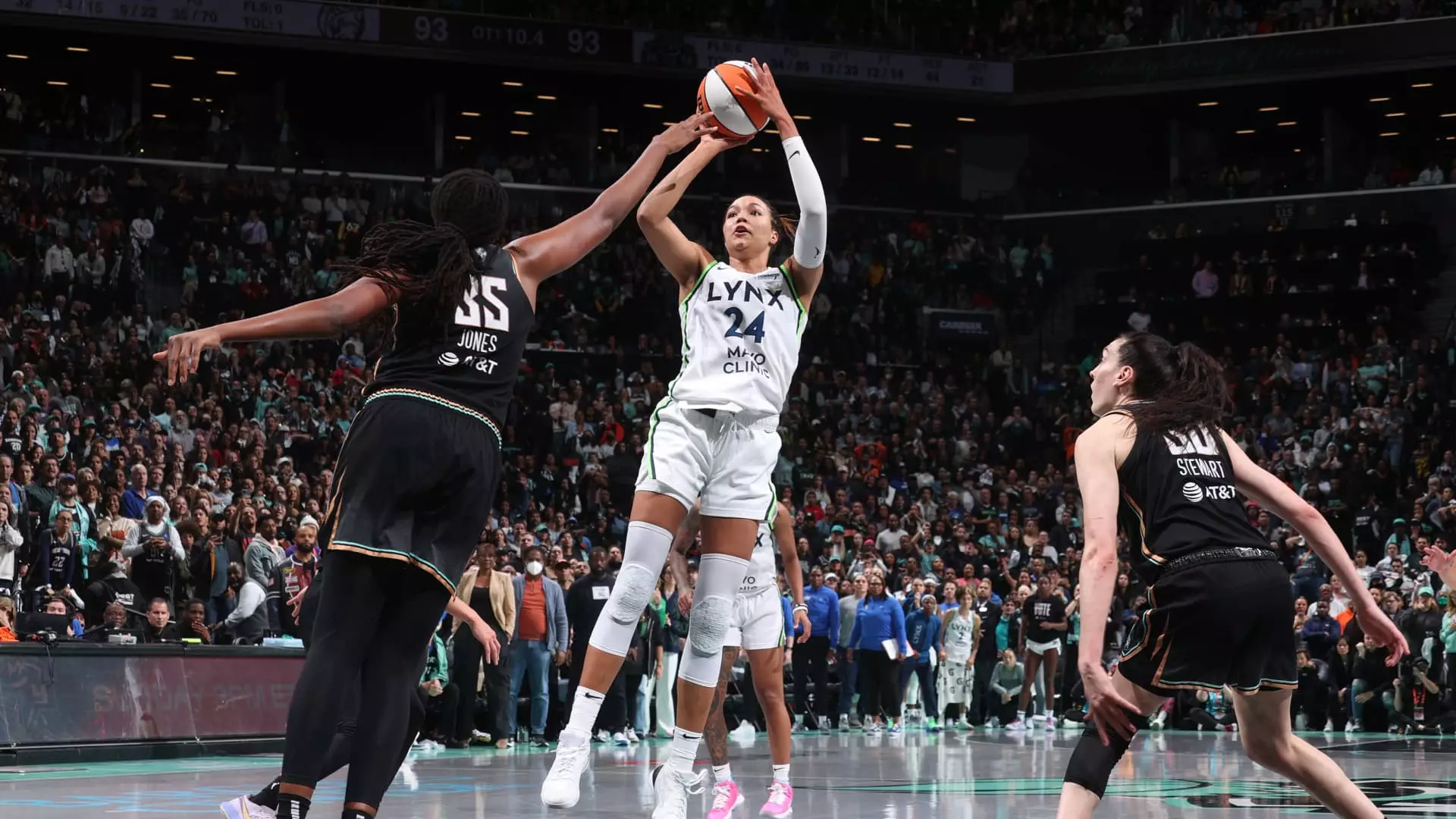As the Women’s National Basketball Association (WNBA) prepares to enter the 2025 season, an air of excitement surrounds the league as it gears up for significant changes. With WNBA Commissioner Cathy Engelbert announcing a move to expand the regular season from 40 to 44 games and extend the Finals from a five-game series to a seven-game showdown, the league is clearly throwing down the gauntlet. These structural modifications signify not only a commitment to enhance the viewing experience for fans but also reflect the burgeoning popularity of women’s basketball.
The decision to lengthen the season is rooted in the league’s impressive growth trajectory, fueled by increasing viewer engagement, attendance, and a robust influx of fresh talent. Engelbert emphasized that these changes are a response to both the pandemic-era challenges and the unprecedented demand for high-quality women’s basketball. Furthermore, the introduction of charter flights for teams has eased logistical burdens, paving the way for more competitive playoff formats.
The adoption of a 2-2-1-1-1 format in the Finals raises the stakes for teams involved, allowing for a more equitable approach to home-court advantage. Previously, the higher seed held two home games at the start of the series, a setup that could often translate into a disproportionate advantage. Now, teams will alternate hosting responsibilities in the first round of the playoffs, promoting a fairer competitive landscape.
Such changes signal a commitment from the WNBA to remain responsive to both teams’ and fans’ needs. By adjusting the playoff format, the league not only steps forward in terms of competitiveness but also enhances the fan experience at each venue. As the league opens up its landscape to more games, the thrill and anticipation for each playoff round will undoubtedly escalate.
Engelbert’s announcement didn’t stop at scheduling; it also included the welcome news of new franchises. The debut of the Golden State Valkyries as the league’s 13th team, along with announced teams in Toronto and Portland, highlights a vigorous expansion phase. With these new additions slated to go live in the coming years, the WNBA is venturing into previously untapped markets that promise to bolster its national appeal.
The allure of the WNBA is not limited to new franchises. The talk of a possible 16th team points to a league ready to grab opportunities while building a wider fan base across North America. As franchises emerge in new cities, they bring fresh rivalries and fanbases, further enriching the league’s narrative.
In an era where digital engagement drives viewership, the WNBA’s recent media rights deal worth an impressive $2.2 billion over 11 seasons is nothing short of revolutionary. This new contract, negotiated within the larger context of the NBA’s media deals, reflects not only a financial validation of the league’s status but also highlights the growing interest from media executives. Their focus on women’s sports positions the WNBA as a leader in this space, especially amid increasing investment and visibility.
The combination of exciting new talents such as Caitlin Clark and Angel Reese, alongside established icons like Breanna Stewart and A’ja Wilson, ensures the league’s competitive edge remains sharp. Together, they are generating record-breaking viewership that can no longer be ignored by sports investors or fans alike.
Despite the applauded growth, challenges remain. As the league ascends to new heights, issues of racism and online harassment have come to light, impacting many players within the WNBA. Engelbert’s responses to these pressing concerns have faced both scrutiny and affirmation, prompting ongoing conversations regarding the league’s stance on social issues. Addressing these matters transparently will be pivotal in ensuring that the league not only thrives in popularity but does so with integrity.
As they navigate these complexities, the WNBA stands at a fascinating crossroads. With amplified competition, expanded engagement, and increasing scrutiny, the league’s future holds multiple possibilities. If it steers through these challenges and upholds its commendable growth trajectory, the 2025 season may well herald a new chapter in the storied history of women’s sports.

